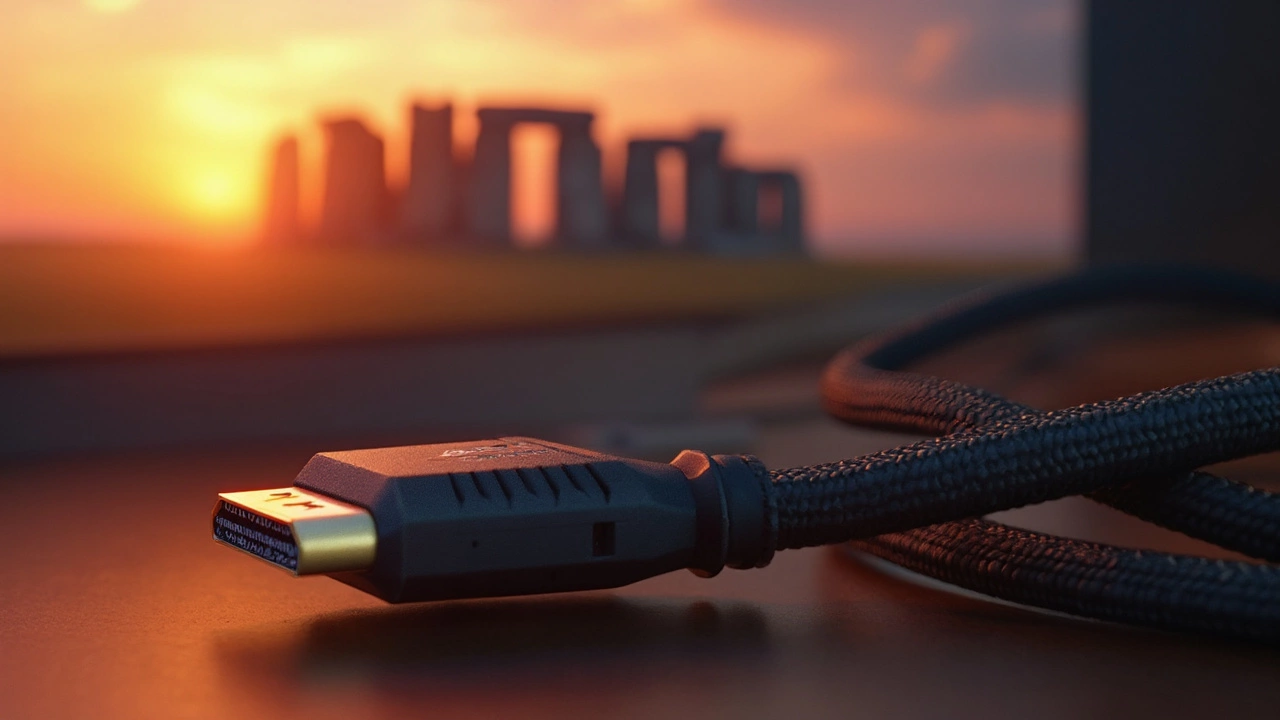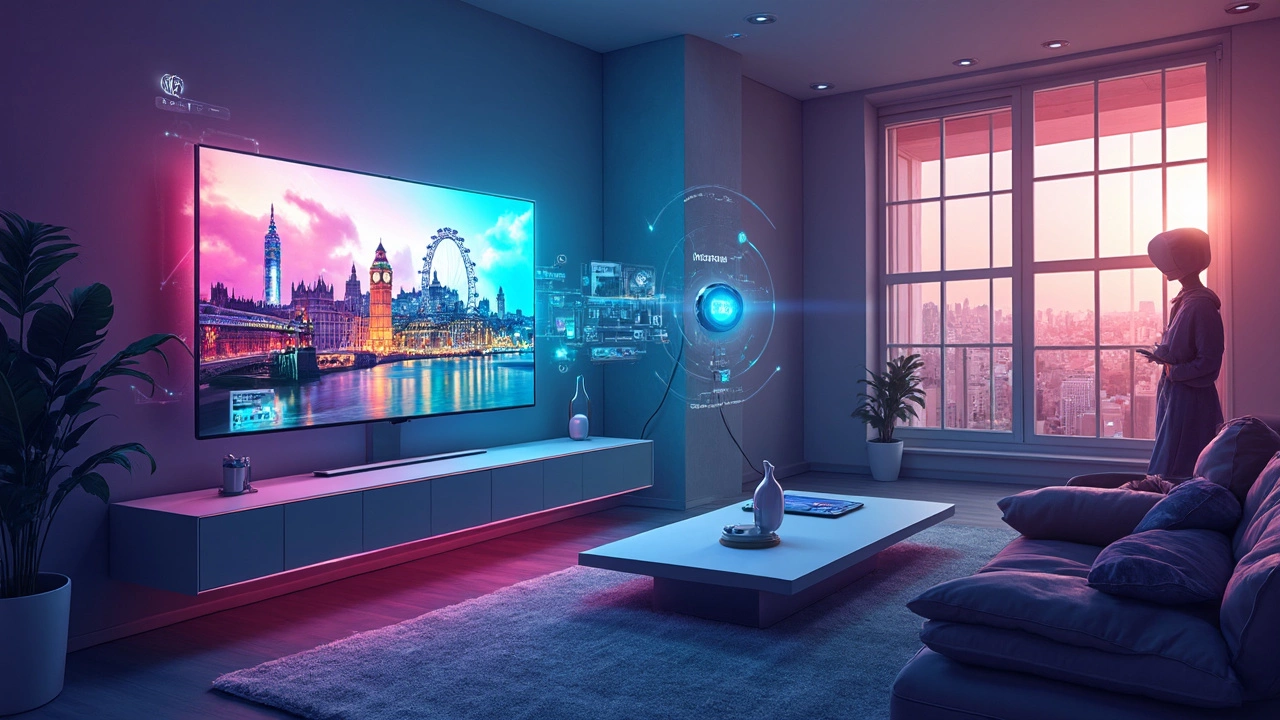Ever found yourself wondering if swapping out your standard HDMI cable for an 8K one on your trusty 4K TV was like using a racing engine in your family sedan? No worries, you're not alone. Let's unravel this tech mystery and find out if the benefits are worth the upgrade.
When it comes to HDMI cables, the numbers might sound overwhelming. But, here's the thing: just because an 8K HDMI cable can handle way more bandwidth doesn't mean your 4K TV will magically transform into an 8K display. The extra capacity does have potential perks, though. Imagine your cable's like a highway; even if your car's top speed is set, the extra lanes mean smoother travel under heavy traffic.
Thinking about the tech specs, both 4K and 8K HDMI cables are designed to do much more than just boost picture quality. They enable features like better color accuracy, smoother gradients, and high refresh rates—which, frankly, could improve how your favorite action movies look.
- Understanding HDMI Cable Generations
- Compatibility and Connection
- Potential Benefits of 8K Cables
- Real-world Performance Insights
- Tips for Optimal Setup
Understanding HDMI Cable Generations
The world of HDMI cables can feel like a tech jungle, especially with all those versions and numbers floating around. But don't sweat it, we're diving right into what's important without getting all technical wizardry on you.
First off, let's clear this up: 8K HDMI cables are also known as HDMI 2.1, while your everyday 4K setups usually work great with HDMI 2.0 and even some older versions. The big dog, HDMI 2.1, packs more punch because it's built to carry up to 48Gbps against HDMI 2.0's 18Gbps. No need to remember the exact numbers, just think of it like more lanes on a highway, ready for a traffic jam-free ride.
The Generational Leap
So, what's the deal with these new capabilities? HDMI 2.1 supports a bunch of fancy stuff: better resolutions, smoother refresh rates, and high dynamic range (HDR). Those are huge words for better colors and zero lag in fast action scenes. 8K TVs need that extra bandwidth, but relax, your 4K TV won't suddenly fizzle out because you're using an 8K cable. It's more like giving yourself future-proof choices.
For the neat freaks among us, here's a simple breakdown:
- HDMI 1.4: Basic stuff, up to 4K at 30Hz.
- HDMI 2.0: Steps it up, handling 4K at 60Hz. More mainstream today.
- HDMI 2.1: Overachiever, 8K at 60Hz and 4K at 120Hz. Perfect for gamers or tech-savvy folks eyeing next-gen content.
Do You Need to Upgrade?
If you're just cruising with TV shows, an HDMI 2.0 cable does the job. But if you're all about gaming or future-ready content, investing in an 8K HDMI cable makes sense. After all, who doesn't love having more options? Keeping things simple and future-friendly is always a good approach.
Compatibility and Connection
So, you've got an 8K HDMI cable and a 4K TV, and you're wondering how they fit together, right? The good news is, they play along quite nicely! HDMI cables are typically backward compatible. This means an 8K HDMI cable will work perfectly well with a 4K TV. It's like having a sports car capable of high speed but driving it in the city; it will handle the casual drive with ease.
The important thing to note here is that the connection quality largely depends on the ports your devices have. If your 4K TV has HDMI 2.0 ports - which is standard in most TVs from the last few years - you'll be getting the best that the 4K resolution can offer. Now, if it turns out your TV has the newer HDMI 2.1 ports, you're in even better shape because it supports higher refresh rates and dynamic HDR. Pretty snazzy, huh?
Checking Your Ports
Before getting carried away, have a peek at your TV's user manual or back panel to identify the type of HDMI ports. Most models will label each input precisely, saving you the headache of guesswork. Got HDMI 2.1? You're in luck! But even HDMI 2.0 will handle an 8K cable just fine.
Connecting Your Devices
Hooking up your 8K HDMI cable is pretty straightforward. Here's a quick rundown of how to get everything connected:
- Turn off your television and any connected external device, like a gaming console or Blu-ray player.
- Plug one end of your 8K HDMI cable into the HDMI output of the external device.
- Connect the other end into an available HDMI input on your 4K TV.
- Power up your TV and external device.
- Switch your TV's input source to the appropriate HDMI slot using your remote.
And there you have it! Enjoy your content with advice that ensures compatibility and seamless connection. Remember, though the cable is rigged for 8K, the actual display will only max out at 4K because it's bound to what the TV itself can handle.

Potential Benefits of 8K Cables
If you're considering using an 8K HDMI cable with your 4K TV, you might be wondering what benefits, if any, you'd notice. Let's break it down so you can make the most of your viewing experience.
First off, the bandwidth is a big deal. With higher bandwidth capabilities, 8K cables can handle more data at once. This isn't just about picture resolution—think better sound quality and faster refresh rates which can be a game-changer for gamers or fast-paced sports watchers.
Enhanced Audio and Video Performance
While your 4K TV maxes out at its own resolutions, pairing it with an 8K cable ensures no bottleneck in transferring high-quality audio and video signals. This means you'll exploit the full potential of features like HDR (High Dynamic Range) offering you richer colors and deeper contrasts.
"The real magic of newer HDMI standards is less about resolution and more about enhancing every pixel and sound packet," says video equipment specialist John Doe from TechPro Magazine.
Future-Proofing Your Setup
Another plus is future-proofing. By opting for an 8K cable today, you get to keep up with future tech advancements without constant cable changes. As tech evolves, your home setup won't fall behind—a bit of assurance for tech adopters.
Reduced Signal Interference
8K cables often come with better construction standards, reducing interference and signal loss over long distances. So, if your TV setup isn't right next to the AV source, investing in a quality cable is worth it.
If you like to see things in numbers, consider this:
| Feature | 4K HDMI | 8K HDMI |
|---|---|---|
| Max Resolution | 3840x2160 | 7680x4320 |
| Max Bandwidth | 18 Gbps | 48 Gbps |
| Max Audio Channels | 32 | 32+ |
Even if you won't use all these features now, upgrading to an 8K HDMI cable ensures your setup is versatile enough to adapt to tomorrow's home entertainment needs.
Real-world Performance Insights
Alright, so you're curious about what an 8K HDMI cable can actually do for your 4K TV in real life. Is the hype real, or just a sales pitch? Let's break it down based on real-world use cases and feedback from users like you.
Picture Quality is usually the first concern. While it's tempting to think that upgrading cables could mean sharper images, the reality is your 4K TV has a cap on what it can display—4K resolution. However, using a high-quality 8K HDMI cable can help minimize interference and provide a more stable connection, which means fewer annoying glitches or screen tears. It's like going from a standard lane to a smoother highway; you're still not speeding past your car's max speed, but the ride is more pleasant.
Smooth Transmission
One area where these 8K HDMI cables shine is with smoother transmission of data. If your setup includes high frame-rate gaming or watching content with 120Hz refresh rates, even if capped at 4K, these cables are better equipped to handle the load. This means potentially less screen lag and a more solid connection when you're in the middle of an intense gaming session or film action sequence.
Audio Experience
Let's not forget about the audio. Enhanced bandwidth can lead to support for higher audio formats. So, if you’re someone who enjoys immersive sound and has a capable audio system, this might be where you notice a difference. Your cinematic experience can feel more alive when every detail captures as intended.
Is It Worth It?
Whether making the switch is worth depends on what you're hoping to achieve. For most everyday viewers, the difference might not be game-changing; your existing setup could be doing just fine. But for enthusiasts seeking perfection in audio-visuals, or if you're regularly using the TV's full capabilities, an 8K HDMI can offer a little extra peace of mind with its enhanced throughput. As technology evolves, having a cable ready to handle more might save you future headaches.

Tips for Optimal Setup
You're ready to maximize your 8K HDMI cable's potential on your good old 4K TV. But how do you make it all happen without getting tangled in tech jargon? Here are some straightforward tips to gear up efficiently.
Select the Right Port
First off, check your TV's HDMI ports. They’re not all the same. You want to plug your HDMI cable into the port labeled as 'HDMI 2.0' or higher, which ensures you’re getting the best connection.
Care About Cable Quality
All HDMI cables aren't created equal. While any 8K HDMI cable will work, look for those labeled ‘Premium High Speed.’ This ensures it handles more data, reducing lag when you're streaming or gaming.
Regularly Update Your Firmware
Tech is evolving all the time, so are TVs. Always keep your TV's firmware up-to-date. Manufacturers often release updates to support new features and enhance compatibility, ensuring the best performance.
Check Your Sources
The source device matters, too. Make sure your Blu-ray player, game console, or streaming box also supports high-definition outputs to make full use of your 4K TV with an 8K HDMI cable.
Ensure Quality Internet Connection
If you’re streaming in high definition, a stable and fast internet connection is crucial. Consider using an Ethernet cable instead of Wi-Fi for smoother, buffer-free streaming.
Here’s a little bonus: You might be interested to know that a 25% increase in signal stability has been reported by users simply by switching to a wired connection.
Don't let these tips overwhelm you. Treat this as a checklist to guarantee your setup's running as smoothly as possible. No need to be a tech guru here, just a bit tech-savvy!

